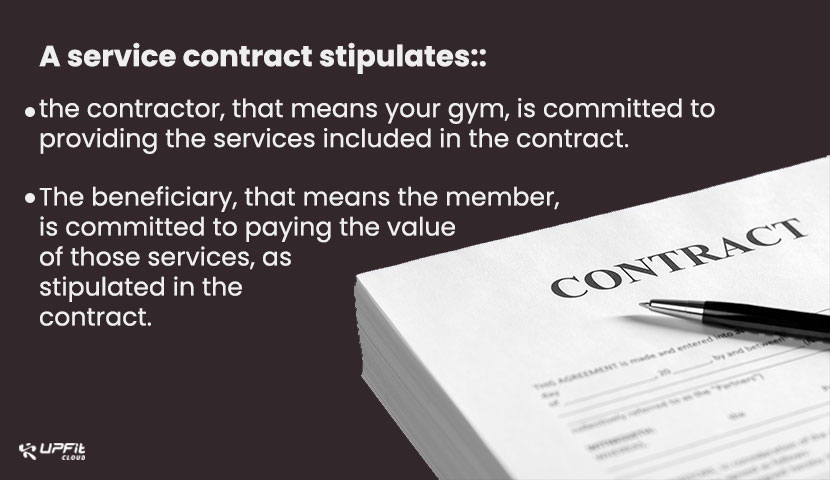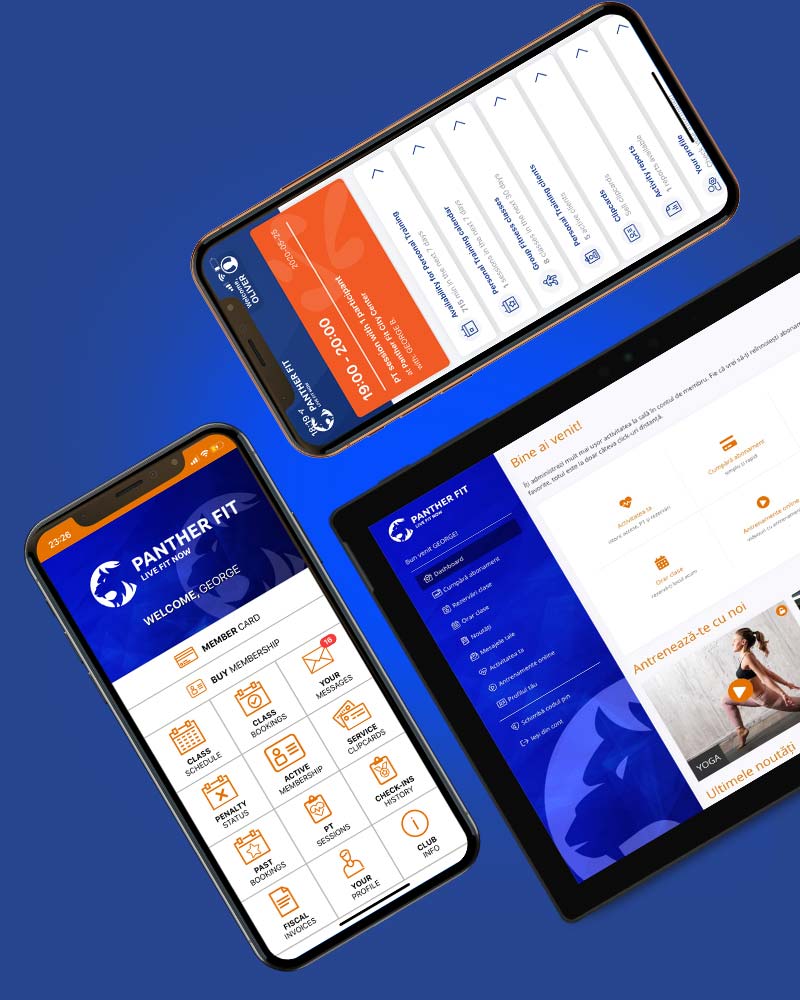Why it's important to have member contracts and how they help you

The main "product" that any gym sells is access to training facilities, more precisely to fitness services. Since we are not talking about a physical object, we recommended signing a contract with the person purchasing the membership.
This type of document is called a service contract or, in our case, a member contract, and it can save you a lot of trouble.
Drawing up such a contract is not a significant effort, and you can use standard documents depending on the services (memberships) you sell. It takes a few minutes to be signed, and the member will thus have access to all the services included in the membership, leaving no room for misinterpretation.
This way, both parties are covered legally should any misunderstanding arise.
What a membership contract must contain
You don't need to draw up complicated contracts that no one can understand. The Internet is full of templates you can use and adapt to the specifics of your fitness center. However, we advise you to seek legal counsel on such matters to make sure you have an ironclad contract.

Many gyms prefer to enter a general contract with a new member when they first purchase membership or service packages so that upon renewal, the agreement signed initially will be considered valid.
Such documents contain only general provisions regarding the services provided and do not include those specific to the membership purchased, so there is room for misunderstandings.
Let's take a concrete example! Let's say a new member buys a daytime pass, which gives them access to the club between 08:00 am and 02:00 pm. The member can request access outside of that period if this is not specified in the contract.
On the other hand, if when purchasing the daytime subscription, the member signed a contract whereby the gym undertakes to provide access only between 08:00 am and 02:00 pm, then the member has no right to enter the gym outside of those hours.
The same applies to memberships that only offer access to certain services and not to all (e.g., access to the pool area, jacuzzi, and group classes).
Another essential aspect that should be included in the member contract is the membership period and implicitly of the contract. For example, if it is a membership with an availability of 12 months, the contract automatically ends after those 12 months. Thus, the contractor, i.e., your gym, is no longer obliged to offer those services after 12 months.
What information should a member contract contain:
- information about the gym (contractor) and member (beneficiary)
- the services included in the membership and the amount that the member must pay (object of the contract)
- membership availability period (contract duration)
- the rules that the member must obey at the gym, as well as the obligations assumed by the club (obligations of the parties)
- details about the termination of the contract
- force majeure details
- penalty clauses, litigation, and other final clauses
Of course, if this applies to your country, the member should also sign a personal data processing agreement to comply with GDPR rules or other data protection laws.
In our experience, it's also a good idea to include a breach of contract clause. This aspect is helpful, especially if members refuse to follow the club's rules and behave inappropriately. On the basis of such a clause, the contract can be automatically terminated, with or without a refund, depending on the document's provisions.
For example, suppose a member refuses to wear a face mask in areas where this is mandatory. In that case, you can cancel their subscription and terminate their contract without having to refund them for the remaining days if you have stated in the contract that the member also signed.
When and how it must be drawn up
As we said above, it is advisable to conclude a separate contract for each membership or service package sold, even when the member constantly buys the same type of membership.
An ideal flow for this would be for the member to select their desired membership, register it, and have the related contract signed by both the member and a club representative, in this case, a front desk employee. Then the member pays the fee, the amount entered in the contract, and their membership becomes active and can be used.
Bear in mind, the contract has no value if both parties do not sign it. Therefore, the member must also receive a signed copy, and the club must keep another one.
Conversely, if you sell memberships online, usually, the related contract does not need to be physically signed. However, when a member buys a membership and makes the payment online with their bank card, they must thick certain boxes to confirm that they accept the conditions of the respective contract.
The contract can be a ready-to-print standard document in which the member's data, subscription type, services included, and period are filled in by hand, in duplicate. You can also have a standard contract in a document on the computer at the reception desk where you fill in the above information and then print it in duplicate.
Both systems are relatively simple to manage but take more time because contracts must be filled in duplicate. In addition, club copies must be archived, another aspect to keep in mind.
An easier option is to digitize the entire process with specific functionalities in the gym management system.
For example, in UPfit.cloud member contracts are automatically generated when a membership is registered. The document is already filled with all the necessary information from the database and only requires signatures. The contract can be printed to be signed, or you can use the electronic signature to scrap archiving costs.
A quick catch-up...
The member or service contract is helpful for gyms, mainly to avoid legal problems or misunderstandings with members.
It is advisable to draw up such a contract each time a member purchases a membership or service package, even if it is not the first time they do so. Although many gyms prefer to conclude a general contract, it is better for each membership sold to have a related contract, which stipulates precisely the services offered, the period and the amount that the member must pay.
By including all these specific details, you will leave no room for misunderstandings, and you will be able to avoid legal problems more efficiently.
Are you struggling to increase the number of new members joining your fitness center?
There is an easier way to get more members! Communicate efficiently with them through automated emails, provide them the option to purchase memberships online, delight them with a professional mobile app and member account, and surprise them with fast services at the reception desk.
With UPfit.cloud, everything is done quickly, and you can start seeing results in a matter of days. Find out the advantages of our platform in a 20-minute demo session.
REQUEST A DEMO
We also recommend...
European Health & Fitness Forum – the first hybrid edition of the EuropeActive event
This year's edition of the European Health & Fitness Forum (EHFF), which draws fitness industry leaders from all over Europe, will be in a hybrid format, where speakers will be on the stage in Koln, but the entire forum will be broadcast online.
Read MoreUsing vouchers to increase sales at your gym
One of the most efficient marketing and sales tools is, without a doubt, vouchers. Well, this sales and marketing tool has yielded excellent results for years in various sectors, including fitness.
Read MoreHow to start a newsletter for your gym’s members
Since few fitness clubs use the newsletter as a marketing method, it is also a great way to distinguish your brand from the rest of the competition. All the while providing members and potential customers with helpful content.
Read MoreFree guides for your gym
We have created a series of free guides that will help expand your gym: advice on increasing sales, lead management, optimising your online marketing strategy, creating a corporate program, and so much more. There are dozens of e-books and guides with useful information and ideas for ambitious gyms, that are willing to use all the tools available to grow their business and recruit more members.
Software that perfectly adapts to your gym's activity
Each gym is unique. That is why UPfit.cloud has a wide range of services, tools, and features that perfectly match your business.
Regardless of how you manage your gym or fitness club activity, UPfit.cloud can be customized so it's easy to use for your team and simple for your members.

Aerobic studio
Discover the benefits
Fitness center
Discover the benefits
Pilates studio
Discover the benefits
Yoga studio
Discover the benefits


























